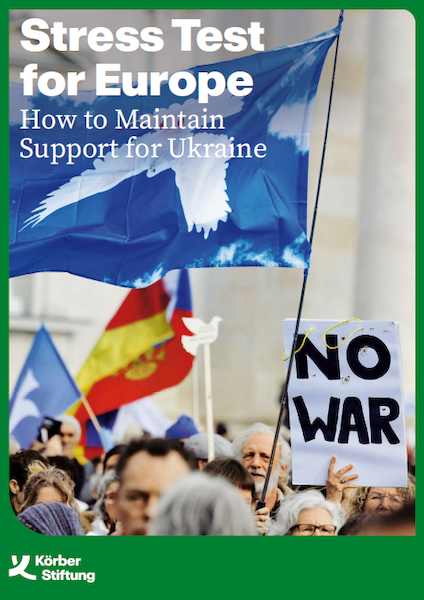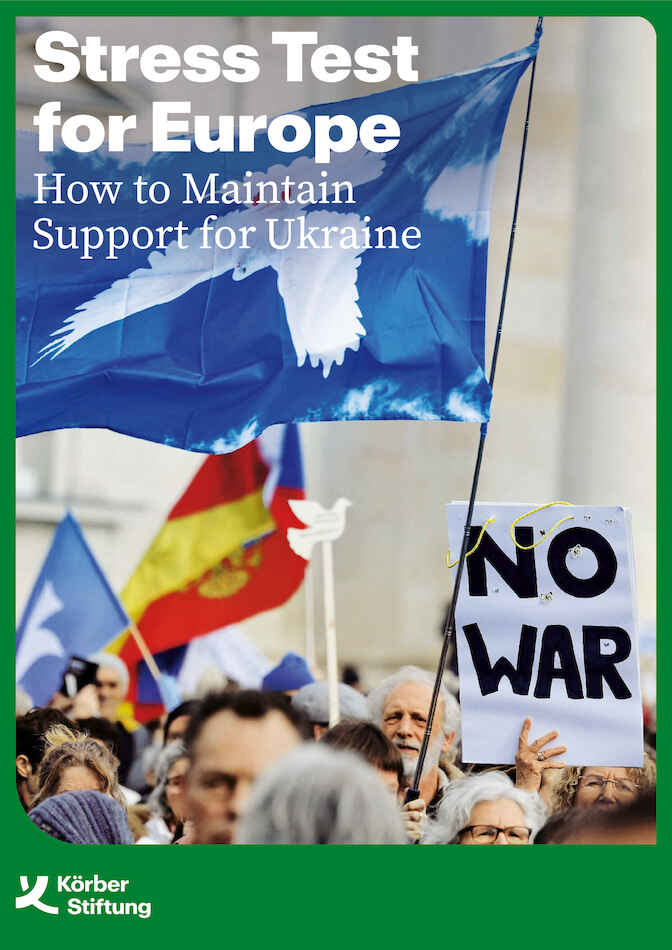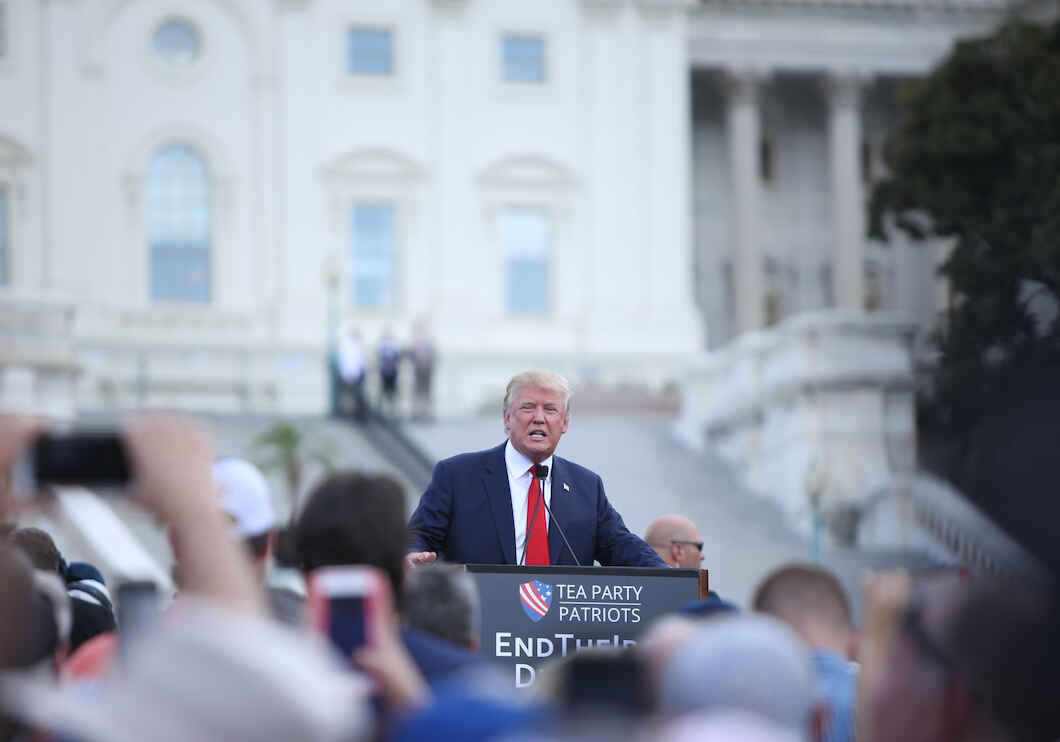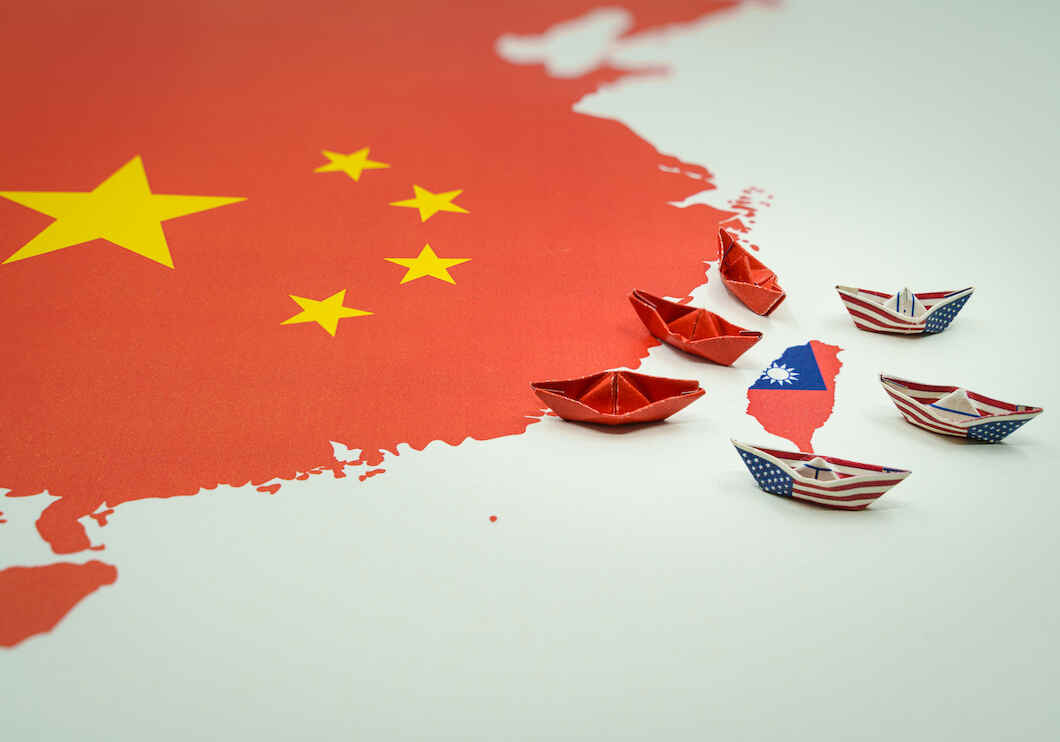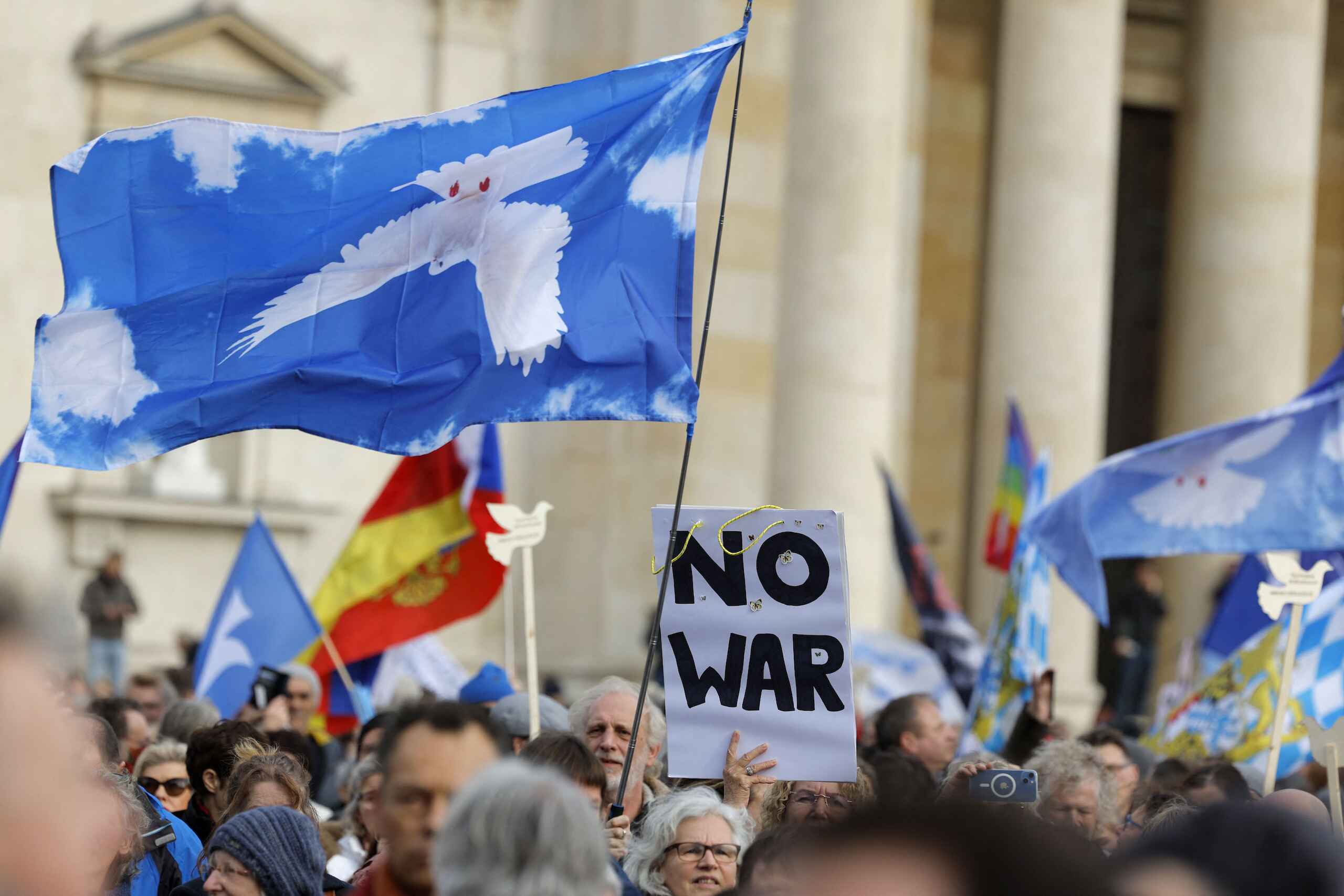
Foto: getty Images
Stress Test for Europe: How to Maintain Support for Ukraine
Die europäische Unterstützung für die Ukraine ist ungebrochen, aber die Kosten für die Verteidigung Kyivs und die Verbesserung der militärischen Fähigkeiten Europas steigen. Angesichts wirtschaftlicher Stagnation wächst das Risiko einer Kriegsmüdigkeit in Europa. Dies könnte den Spielraum der europäischen Regierungen, Kyiv langfristig zu unterstützen, erheblich einschränken. Dies gilt umso mehr, da Russland bereit ist, jedes Anzeichen von Schwäche auszunutzen und in der Lage ist, den Druck auf Europa zu erhöhen und Konflikte zu schüren.
Executive Summary
How to support Ukraine in the long term?
All teams said their respective countries would maintain support for Ukraine in the event of a protracted war and reduced US assistance – some for as long as possible, others for as long as necessary. Poland and Sweden share a longstanding threat perception of Russia and would be prepared to support Ukraine as long as it takes. Germany’s view of Russia has changed dramatically since the start of the war, leading to unwavering support for Ukraine’s self-defence. Italy, on the other hand, has acknowledged the limits of its political and economic resources to sustain long-term support.
“Germany’s aim is to keep Ukraine up, Russia out and the United States in.”
How much agreement within the EU?
The policy game revealed that EU member states do not prioritize unity in the same way. While the four country teams shared many policy objectives, maintaining unity within the EU was not always seen as a prerequisite. The Swedish, German and Italian teams saw EU unity as key. However, their approach to maintaining it differed. Germany and Italy would be prepared to use a carrot-and-stick strategy to deal with outliers, while Sweden would rely mainly on pressure. The Polish team prioritized NATO’s ability to act over EU unity, preferring to build a coalition of the willing where necessary to push for a decisive political response.
What about transatlantic relations?
The four country teams shared an understanding of the United States as a key actor for European security. The importance of the US political, financial and military contribution cannot be underestimated. Therefore, all teams recommended policies to keep the United States engaged in Ukraine’s self-defence and European security. This included involving NATO in countering attacks against Europe, as well as adopting a transactional approach and offering to help the United States protect its security interests in the Indo-Pacific. However, the teams differed in their assessment of Europe’s ability to maintain Ukraine’s self-defence without or with significantly less US support. While the German, Polish and Swedish team focused on maintaining Kyiv’s military capabilities, the Italian team assumed that this would not be possible without the United States.
Giving in to public opinion?
Domestic pressure was perceived very differently in the four countries. Public opinion was seen as reinforcing the positions of the Polish and Swedish governments against Russia and in favour of Ukraine. The German team did not take public support for Ukraine for granted and saw an important task for the government in actively maintaining this. The Italian team shaped its political response around domestic pressure to accommodate sceptical voices in the population. Strategic communication to counter disinformation and false narratives was considered equally important by all teams.
“Italy is not in a position to influence the peace plan. We should rather focus on the reconstruction of Ukraine.”
What conditions for peace negotiations?
There was a strong consensus that peace negotiations could only take place on Ukraine’s terms. However, the teams differed as to what should be the preconditions to support or join negotiations. If a Western ally agreed to negotiate a Chinese-brokered peace plan, Germany, Poland and Sweden would be sceptical and would seek to move towards a European initiative. Italy was more inclined to support negotiations to reach a ceasefire as soon as possible.
“Sweden needs to prevent a kind of Minsk III. Negotiations can only take place if Russia withdraws its troops from Ukraine.”
What role for the international community?
All four teams recommended reaching out to states that have not taken a clear stance on Russia’s war against Ukraine, including India and Brazil, and offering support to mitigate the negative effects of the war. This approach was driven by the understanding that support from a wide range of states is needed to increase pressure on Russia and continue to isolate it. This was most strongly endorsed by the Italian team and least so by the Polish team, which focused mainly on Western institutions. A mediating role for China would be rejected by Germany, Poland, and Sweden. Warsaw and Stockholm in particular would refuse to see Beijing as a legitimate mediator. Given Italy’s perception of having limited power to influence events, it would be more willing to explore the possibilities of China as a mediator.
Policy Recommendations
1. Safeguard European unity
Unity remains a precondition for a decisive European response to Russian aggression and support for Ukraine. The ability to maintain this unity against increasing internal and external pressure depends on a common understanding of the preferred outcome of the war. Europe needs to create a shared vision of the continent’s future, but also red lines in order to actively shape its future rather than react to events. This will reduce the risk of Russia driving wedges between European countries. To deal with outliers that undermine common action, the EU can rely on economic and financial pressure, but it must also be prepared to make transactional compromises in other policy areas.
2. Strengthen the ownership and agency of Ukraine
While European security is at risk, it is Ukraine’s survival that is most acutely at stake. If the war burden for Europe increases while public support for Kyiv declines, it must not turn inward. Instead, the interests of Ukraine must be kept constantly in mind through close coordination with it. Europe could use existing formats within NATO, the EU and the European Political Community, as well as bilateral contacts, to allow for constant coordination. It must also make it clear to Moscow that nothing will be agreed without Ukraine’s consent.
3. Engage the United States as much as possible
The United States’ support is needed to shape the outcome of the war in Ukraine’s favour and to secure NATO’s eastern flank. Europe should reach out to political actors among Democrats and Republicans, and emphasize that European and US security is a shared security, especially vis-à-vis Russia. An emboldened Russia would strengthen China’s position, thereby hampering US and European interests vis-à-vis China. If a new US administration favours a transactional foreign policy approach, rather than one based on shared values, Europe could use sanctions on Beijing and a military presence in the Indo-Pacific to maintain Washington’s support for Ukraine and European security.
4. Improve strategic communication to European audiences
Foreign policy decisions are shaped by domestic realities. To preserve room for manoeuvre, European governments should communicate more clearly that supporting Ukraine is in Europe’s interest, while a war outcome shaped by Russian imperialism would threaten the security of the whole continent. Key should be the narrative that even though security comes at a price, giving in to Russian aggression is ultimately the more costly option, both in terms of economy and security. The communication strategies must be tailored to the respective domestic audiences, as relations with and perceptions of Ukraine, Russia and the war vary across the continent.
5. Implement contingency planning for hybrid attacks
To increase resilience to cyber and hybrid attacks, Europe needs to improve its civil-military and cross-national cooperation, as set out in the European Cyber Defence Policy. To limit the impact of attacks on Europe’s readiness to support Ukraine, contingency planning must include clear communication to the European public on the origin and purpose of the attacks, as well as on the measures necessary to counter them. Moreover, Europe should coordinate national action in the cyber realm, including possible retaliation measures.
6. Invest in (joint) European military production capabilities
Europe’s support for Ukraine’s self-defence is shaped by political will but even more by resources. In case of a reduction of US assistance to Kyiv, Europe has to rely on its own military production capabilities if it wants to maintain Ukraine’s self-defence. To this end, Europe needs to take action now by creating production facilities, assembling know-how and experts, coordinating and streamlining production capacities across the continent, and allocating funding. Additionally, Europe should reach out to non-European partners to set up production partnerships.
